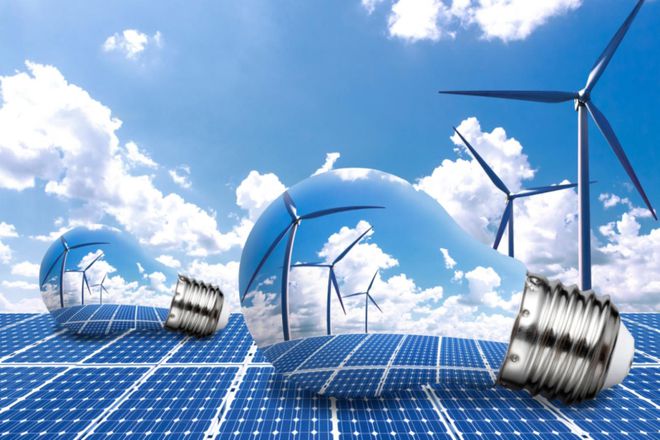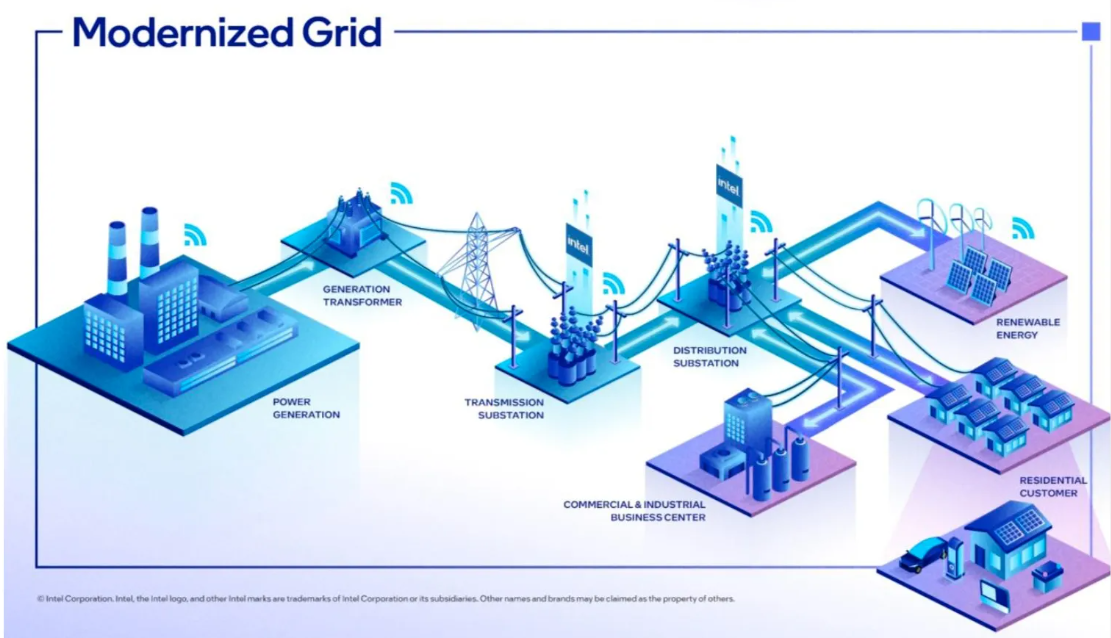
The production, distribution and use of electricity is undergoing changes not seen in decades. As the world ADAPTS to climate change and geopolitical uncertainty, innovative technologies are driving dramatic changes across the energy ecosystem.
The Role of Semiconductors in the Energy Transition
Wolfspeed is a leader in the manufacturing of silicon carbide (SiC) substrates and high-power SiC semiconductor devices. The many advantages of SiC in power conversion are well understood. These include the intrinsic advantages of this wide bandgap (WBG) material in more efficiently scaling to higher power compared to silicon (Si) based devices. The lower thermal resistance of SiC enables its use in extreme heat and humidity compared to Si IGBTs. Lower losses during power conversion translate to efficiency improvements of up to 3% in solar inverters and Maximum PowerPoint Tracking (MPPT) boost systems, while allowing a shrink in the associated cooling systems.
Overall system costs can be reduced by up to 30% with a smaller and lighter system that is easier to transport, install, and maintain. Figure 1 illustrates various applications of Wolfspeed’s SiC product offerings in residential applications where a micro-inverter could be used, to industrial applications that need a 3-phase inverter system, as well as energy storage systems that take advantage of the low conversion losses with SiC. Product offerings of discrete devices and power modules in a wide range of voltage and power can meet these diverse requirements.

Figure 1: Illustrating the use of SiC in many applications of power conversion
Expanding SiC substrate and device manufacturing to meet future demand is a key goal. The complexity of the manufacturing process or advanced equipment and supply chain bottlenecks may be key constraints. Environmental factors in manufacturing, including the gases/chemicals/energy required to produce these devices, need to be considered and optimized. The challenge is to optimally manage growth and investment and produce the right product mix at the right time. Wolfspeed is vertically integrated with its substrate supply and fabs, which creates a number of advantages in addressing these challenges. It is transitioning to produce larger 200mm SiC wafers and building fabs that use them. As with silicon, this is expected to improve fab efficiency and reduce mold costs. Continuous innovation in substrate and mold manufacturing is essential to further reduce mold costs.
WBG semiconductors will play an important role in electric vehicles (EVs), energy storage, and power distribution. A common factor in power conversion applications is the tendency to increase power density. Electricity demand is increasing due to the transition away from fossil fuel energy sources such as electric vehicles and heat pumps. WBG materials, such as SiC and GaN, are able to improve the efficiency of energy distribution and use, which is necessary for an environmentally sustainable future.
Scaling up the production of these semiconductors is critical to reducing costs. Texas Instruments manufactures GaN power devices. GaN's high-efficiency, high-frequency switches can use simpler converter topologies and smaller magnetics, creating system-level advantages in cost and size. GaN devices are expected to play an increasingly important role in many applications, including electric vehicles, solar energy conversion, power adapters, and home and industrial power supplies.
Smart Grids for Decentralized Energy Distribution
The energy and power generation sector is currently the biggest source of greenhouse gas emissions. Renewable energy generation is expected to surpass fossil-fuel-based production in the coming years. A significant portion of this can be decentralized, where microgrids and EVs function to power homes. Battery and other long-term energy storage makes the variable nature of renewable energy generation more stable. Some of the characteristics of a future electric grid are:
● High-efficiency power conversion with the use of modular and scalable Solid-State Power Stations (SSPSs) that use WBG semiconductors for power conversion
● Bi-directional power flow allowing integration with distributed, renewable energy generation and energy storage systems
● Use of Solid-State Transformers (SSTs) with higher frequency switching that enables size and weight reduction
● Increased power density in the SSPS roadmap, with the trend to higher voltage and power ratings and the integration of secure communications.
● Integration with High Voltage DC (HVDC) power transmission systems and grid-forming converters
● Real-time autonomous load-balancing with advanced algorithms and server-class computation at the substations
● High level of cybersecurity
● Resiliency to the severity of weather conditions created by climate change

Figure 2(a): A traditional, centralized power grid

Figure 2(b): A modern, smart energy grid
Nuclear Energy’s Role in the Overall Renewable Energy Mix
Nuclear fission currently provides about 25% of low-carbon electricity. Large power plants offer high base load (>300 MW) and high uptime. Newly developed small reactors (20 MW and above) can complement these large reactors and provide stability to the grid. At the same time, solar and wind energy can surge to meet total demand. This potential future energy system is illustrated in Figure 3.

Figure 3: Potential Future Energy System
Nuclear fusion promises to be a way to produce large amounts of clean energy. Many government LABS, universities, and private companies are actively working on ways to make this approach economically and practically feasible. A phased approach could be taken, using neutron radiography for inspection of industrial components, production of medical isotopes, recovery of nuclear waste, and efforts to generate fusion energy over the long term.
Conclusion
The goal of net-zero emissions requires changes to energy generation, distribution, and usage. There is a sense of urgency to implement these changes. WBG semiconductors enable more efficient power conversion, however, their widespread use will entail scaling up production and lowering costs. A smarter, more resilient, and more distributed grid is a key requirement to meet the increased electric power need for the future. Scaling up PV and wind generation is essential in the short term, but fusion nuclear energy has the potential to supply vast amounts of clean energy in the long term.
About US
